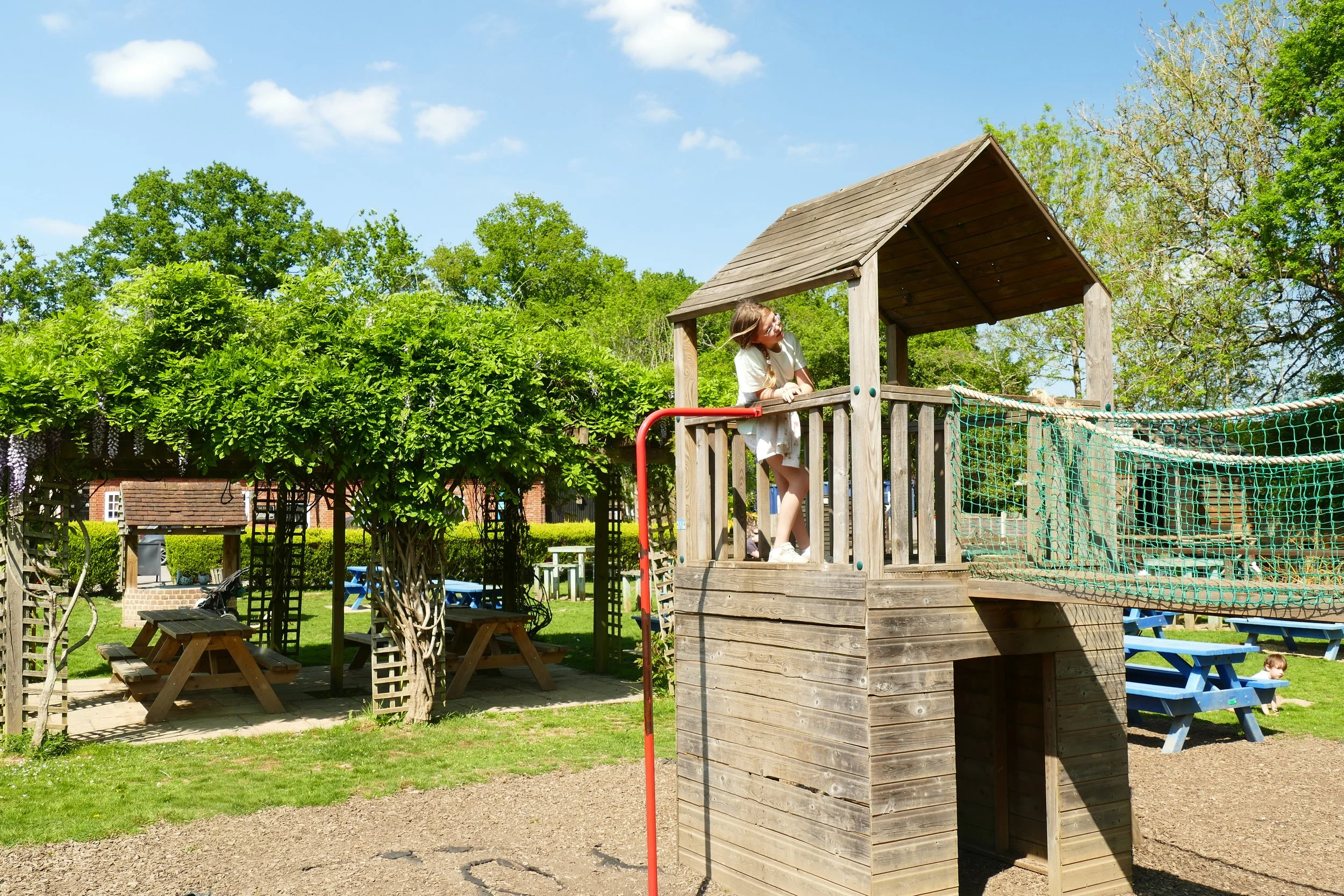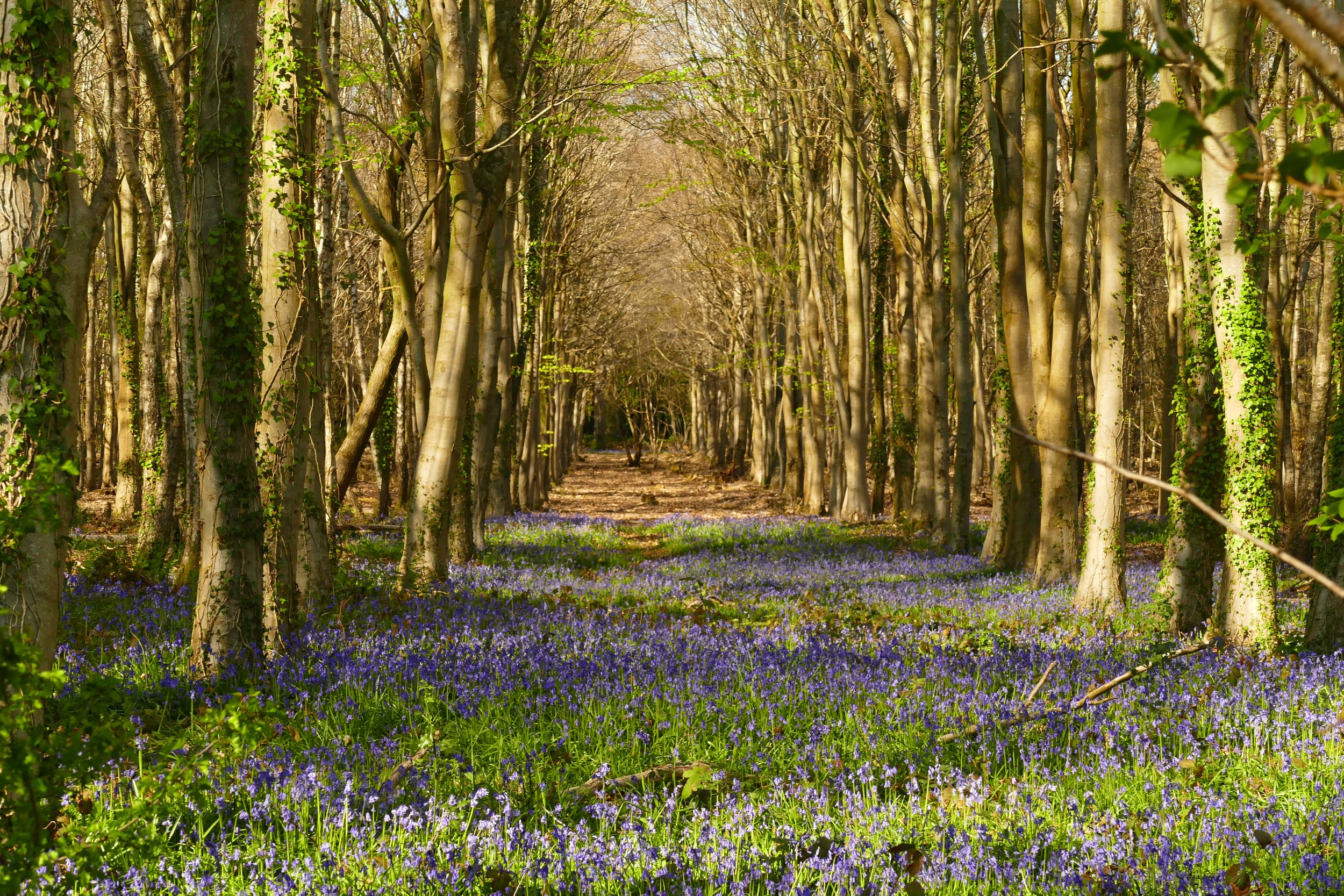Owslebury & Marwell
Children will enjoy spotting animals as they walk around the perimeter of Marwell Zoo.
A red panda spotted from the footpath
The Basics
Time: 1 hour 40 mins
Distance: 5.9 km / 3.7 miles
Terrain: Some paths are narrow and rough, stiles, nettles can be a problem in summer and mud in winter, short section on quiet country road.
Pushchair: This route is not suitable for pushchairs.
Dogs: Yes, but will need to be on leads through farmland where it is possible that you will meet cattle.
Refreshments: The Ship Inn, Owslebury which has a cosy interior plus a large garden with kid’s play area.
Toilets: There are no public toilets.
Public Transport: Available on Sundays and bank holiday Mondays only, the 69 bus route run by Stagecoach departs from Winchester Bus Station to the Marwell Zoo entrance or Cresta Coaches route 63, runs from Winchester to the Ship Inn on Mondays and Thursdays.
Parking: We parked at the pub as we ate there, but you can also find a limited amount of parking on the road in front of the church in Owslebury (Postcode: SO21 1LT - W3W: ///shippers.reliving.dislikes).
The Ship Inn has a great garden with a children's play area
This walk will take you from the pretty Hampshire village of Owslebury to the perimeter of Marwell Zoo. Public footpaths line two sides of the property and if children keep their eyes peeled, they are likely to spot some of the animals inside their enclosures. We have completed this walk twice and saw different animals each time including a red panda climbing a tree, three rhino, wallabies, an aviary of birds, a herd of Prezwalski’s horses and some grazing banteng, a type of Asian cow.
The Route
We began our walk following a delightful Sunday roast at The Ship Inn, Owslebury. From here, we walked into the village along the quiet road towards the church. Beside the church is a public open space where children can run around and a couple of round picnic tables beneath an ancient tree.
Follow the footpath across the middle of the open space to the right of the church and find a gate on the other side in the right hand corner. The gate will take you along a fenced section of path with a field of grazing cattle to your left (behind fence). You will see what looks like quad bike tracks on the hillside in the distance. Walk the length of the path, passing a pony paddock on your right as you near the bottom. Some of this section had a few nettles, so long clothing is advised.
At the bottom, you will come to a stile and then another. This will bring you to the edge of another field where you must first negotiate a few nettles and then an electric fence. The fence has a safe section with a handle, so that walkers can open and close it. Cross the field in a straight line to the opposite edge. I have walked through this field twice and on one of the occasions it did have grazing cattle in it.
On the opposite side, look for the section of electric fence that has the handle for safe opening. Replace the fence behind you and walk through the tree line and turn immediately right to find the footpath on the upper side of the trees. At the time of writing, there was a felled tree here that we needed to climb, but obvious chainsaw work around the area gave us hints that it would soon be cleared.
On the upper side of the trees follow the little worn path along the edge of the field with the trees directly to your right. You will see a groovy looking abandoned caravan in the middle of the field to your left. As you approach the farm, you will need to use handles to open two more sections of electric fence to cross the farm track. Go straight ahead along the farm entrance track (the farmer has provided plenty of signage to make it very clear where the footpath is) towards the road on the other side.
When you hit the road, which is a quiet country lane, turn left and follow it as it goes gradually up hill. You will come to a solid metal gate on your right, which is the first sign that you are nearing the zoo. Beside the gate, look out for the footpath which runs on the right hand side behind some trees but parallel to the road.
Along this section, you should look carefully for gaps in the leaves as it will be on your right here that you will have your best chances for spotting animals. We saw the banteng, red panda, aviary and wallabies all along this section. When you reach the corner, follow the bridlepath to your right, turning away from the road.
This section of path continues to skirt around the zoo, but had some of the worst nettles (and is also muddy in winter). A good stick should help you beat them back if coming in high summer! Follow the path with the zoo to your right. After a short distance, the path will bend to your left, but it is easy to navigate as there is only one option. Stick with the same path, keeping close to the zoo. The path will eventually cross an access track. As you continue on the other side, keep looking to your right as it was here that you can get good glimpses of the rhino enclosure in the distance. If you are lucky, like we were, you may see them out in their field.
Keep going on the same path until you eventually meet the road. Turn right here and then almost immediately turn right up a path inlaid with some old orange bricks. You will soon cross the entranceway to the zoo and on the opposite side, the public right of way continues beside a big picture of an otter.
At the top of this section, cross the tarmac at the top end of the car park and continue on the path straight ahead, going into woodland. Stay on the path until you come to a set of wooden steps on your left and right. Go right up the steps and continue through the lightly wooded area until you reach a large ploughed field. It was just before entering the field, that we looked to our right and saw a large paddock with a herd of Prezwalski’s horses in it.
Follow the path across the middle of the ploughed field and just before the houses on the other side, turn left up the straight permissive path. At the top of this section, turn right and follow the path as it passes along the backs of various properties. When you reach the road, turn right to very shortly find yourself back at Owslebury and The Ship Inn.
As a member, you gain instant access to all 133 PDF files in our PDF library. You also get a digital membership card that allows you to benefit from special members-only discounts at some of our favourite pit-stops on the walks.
Did you know?
The zoo was founded by Dr John Knowles in 1972. He initially sold a Rolls Royce of his to buy some zebras. Dr Knowles always ran the zoo with a particular emphasis on wildlife conservation and was later awarded an OBE for his services.
We are passionate about keeping The Ambling Path as a free resource available to everyone, forever. If you have enjoyed using our walking guides, then please consider leaving us a donation. This will help to cover our costs as well as rewarding the considerable time and effort needed to maintain the site. Thank you.



























